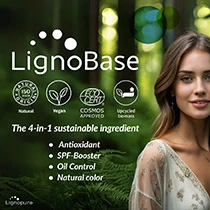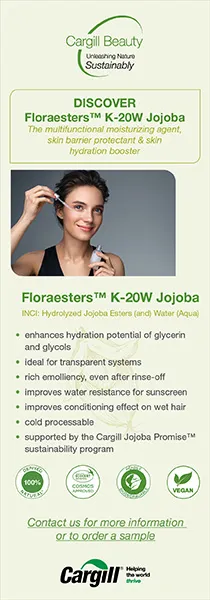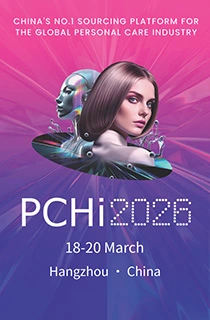New Zealand aligns cosmetic ingredient safety rules with EU protections
Key takeaways
- New Zealand is tightening its cosmetic rules for the first time since 2012 to align closer with EU standards.
- More products and ingredients will now fall under safety controls.
- New Zealand’s move comes as the EU considers loosening some of its own protections.

New Zealand’s Environmental Protection Authority (EPA) is updating the country’s cosmetic ingredient safety rules, for the first time since 2012, to align more closely with the EU’s current cosmetic regulatory framework.
The EPA emphasized that these amendments are necessary as “90% of cosmetic products in New Zealand are manufactured overseas and imported into the country.”
International alignment, it says, is therefore essential to avoid trade barriers and regulatory fragmentation while improving safety standards.
The revision tightens rules around hazardous ingredients, systematically bans per- and polyfluoroalkyl chemicals (PFAS) in cosmetics, and increases oversight of nanomaterials. It also refreshes ingredient lists to match EU safety updates.
The amendments also require compliance with the latest fragrance standards, and strengthen labeling and handling requirements to improve safety.
The updates follow a formal public consultation, during which 20 submissions were received. Examples include L’Oréal, which pushed for a 36-month transition period before the new amendments take effect. The Personal Care Products Council (PCPC) asked for 48 months, and the Cosmetic, Toiletry and Fragrance Association of Singapore (CTFAS) warned that 48–60 months should be the minimum workable timeframe.
However, the EPA ultimately confirmed a far shorter window by extending compliance only until December 31, 2025.
From January 1, 2026, all newly imported or manufactured cosmetics (excluding PFAS products) must comply with the updated standard, which will take effect in stages. The authority is aware of the reformulation challenges companies will face due to long development and supply chain cycles.
However, while New Zealand is better aliging regulations with European policys, the EU is now considering relaxing some of its protections. New Zealand is opting for a hazard-based trigger, which the EU currently uses, but the EU is in the works to adopt a risk-based system.
Banned, restricted and aligned
New Zealand has overhauled its banned and restricted ingredient lists for cosmetics to modernize the country’s regulatory framework.
The revisions span Schedules 4–8 of the Cosmetic Products Group Standard — the core legal lists determining which substances are prohibited outright, and which are allowed only with strict concentration limits or conditions. For example, colorants, preservatives, and UV filters are permitted under strict limits.
.webp) Cosmetic testing and formulation work is expected to increase as more products fall under updated safety rules.The updates are designed to catch up with more than a decade of changes in Europe. The EPA’s decision-making committee says the amendments “align with the developments in the EU Cosmetics Regulation, which is regarded as being an example of international best practice.”
Cosmetic testing and formulation work is expected to increase as more products fall under updated safety rules.The updates are designed to catch up with more than a decade of changes in Europe. The EPA’s decision-making committee says the amendments “align with the developments in the EU Cosmetics Regulation, which is regarded as being an example of international best practice.”
Industry groups, including Cosmetics New Zealand, the PCPC, and the NZ Food & Grocery Council, support this approach. They argue that the updates will avoid unnecessary trade barriers and ensure that New Zealand continues to benefit from the EU’s safety science.
However, some companies urged caution, warning that banning ingredients that are still permitted in other major markets risks forcing reformulations. Reformulation may reduce product availability and increase cost for New Zealand consumers.
The committee acknowledged those concerns. However, it also noted that New Zealand has not incorporated EU schedule updates since 2012, leaving the rules outdated in several areas.
Reducing that backlog, the EPA says, is the immediate priority.
PFAS prohibition
One key change in the update is to completely ban PFAS chemicals from cosmetics.
PFAS are often added to cosmetics to make them water-resistant, smooth, or long-wearing. However, the ingredients do not break down in the environment or the human body.
These “forever chemicals” accumulate over time, and exposure, whether through the skin or by ingestion, is linked to cancer, immune suppression, reproductive harm, and endocrine disruption.
The EPA underlined those concerns in its ruling, noting that PFAS “do not easily break down” and that their accumulation in the environment or in people “may result in harmful effects.”
Rather than phasing PFAS out ingredient by ingredient, the EPA says “a clear ban on PFAS is the most effective and efficient approach.” It adds that it would otherwise be difficult to regulate thousands of related compounds individually.
The authority further describes the move as potentially “a world first,” and says it aligns with international efforts to restrict PFAS to essential uses only.
Local Kiwi manufacturers told the EPA they already avoid PFAS in their formulations. As a result, the burden of reformulation and compliance will mostly affect imported brands.
.webp) PFAS, often called “forever chemicals,” are will be fully phased out of cosmetics in New Zealand.To grant businesses time to phase out affected products, the EPA has built in a multi-year transition: no import or manufacture after December 31, 2026, no sales after December 31, 2027, and mandatory disposal by June 30, 2028.
PFAS, often called “forever chemicals,” are will be fully phased out of cosmetics in New Zealand.To grant businesses time to phase out affected products, the EPA has built in a multi-year transition: no import or manufacture after December 31, 2026, no sales after December 31, 2027, and mandatory disposal by June 30, 2028.
Risk vs hazard
As part of the update, New Zealand’s cosmetic safety rules (which set ingredient limits and require proper labeling, warnings, and disposal) will now apply to many more products.
Any cosmetic that uses an ingredient classified as hazardous in its raw form must comply with the Group Standard. This applies even when the finished product is considered non-hazardous. If there is a hazardous ingredient in the formula, the product automatically qualifies to get regulated under the new rule.
Before the amendment, only hazardous finished products were regulated — not products containing hazardous ingredients. The EPA says the shift closes a gap and provides more certainty for both industry and regulators.
Some stakeholders challenge the EPA, claiming it would be simpler if all cosmetics were regulated in the same way. They argue this would reduce confusion about which products fall into scope and reduce compliance complexity for brands managing large product portfolios.
However, the EPA noted that it “can only regulate hazardous substances… expanding the scope… to include all cosmetic products is not possible.”
The practical effect is that more everyday products, such as toothpaste, self-tanners, and daily SPF moisturizers, must now follow the Group Standard because they contain ingredients that are only hazardous before dilution.
Meanwhile, in Europe, policymakers consider a different shift. In June, the European Commission prepared its “simplification” proposal for cosmetic chemical requirements, leading to concerns from safety advocates that Brussels was weakening its precautionary framework.
Experts say a hazard-based system — restricting a substance because it is hazardous — provides the highest level of public and environmental protection. The EU’s draft proposal, however, leans toward a risk-based model that keeps hazardous chemicals in products where exposure is judged to be low enough.
Supporters argue this lowers regulatory burden and speeds up innovation. Critics counter that it risks reversing decades of consumer safeguards.












